|
Rookwood Cemetery, or Necropolis ( meaning "City of the Dead") is 300 hectares / 877 acres in size, making it the largest cemetery in the southern hemisphere. Rookwood Necropolis is vast..... one of the best preserved Victorian era "gardenesque" cemeteries in the world, with burials starting here in about 1867. It was always going to be a tough job to even touch the sides of the heritage involved in a cemetery as big as this one - but Julie Rusten, Jane, and Kevin of the "Friends of Rookwood" gave it a shot this last weekend at their yearly open day. 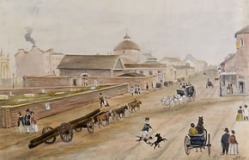 Rookwood was founded in the 1860's as two older cemeteries became full, and the land was needed by the living. When the Devonshire Street / Sandhills Cemetery,(where Belmore park and Central Railway station are now,) and the former Graveyard of the St Andrews Cathedral in George Street in the Sydney CBD were closed and the land resumed, many graves were then re-located . As a result - a huge slice of our early colonial history has either been moved here to Rookwood from these places, or buried here ever since. This painting above is one of the old Sydney burial ground in George Street, where the Town Hall is now. It seems hard to imagine that the heart of our CBD was once considered the "outer, outer limits" of town - in 1802! The site was chosen for:
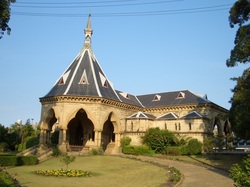 The railway line started from a purpose built Mortuary station in Regent Street, off Broadway in the Sydney CBD, seen here. This is just around the corner from Central Railway station, where it remains to this day. The special train would then steam from here out to Rookwood, and dropped people at 5 different railway stations, either for a funeral, or a day out with the "passed on" relatives, within the cemetery itself. Victorian society had an entire etiquette around the subject of dealing with grief. It was a fairly common thing for people to spend time at the grave site, and part of popular culture was to be re-united with loved ones in death. Tragedy could strike families in cruel ways - and often did. On some grave sites in Rookwood we can see a generation of children in a family taken away in a measles, typhoid, dysentery or influenza epidemic, for example. Industrial accidents and related chronic health conditions from dangerous work practices that eventually resulted in death, such as lead poisoning, breathing coal dust, and problems that we now associate with the third world, were commonplace. Without antibiotics, a scratch in the garden could get infected and kill you, as easily as falling off a horse, or walking in front of a carriage at the wrong time. God help you if you were having children in the 19th century - 3 or 4 out of 10 didn't make it to adulthood, with 3 in 20 mothers dying in childbirth. Death was a much more prevalent fact of life that Victorian era people had to cope with. Trains left the Mortuary station in the morning, and then typically returned in the mid to late afternoon. There were first class, second class and third class passengers - with the dearly departed travelling in the luggage car for free! This is what the Mortuary railway stations at Rookwood looked like. Rookwood was designed as a Victorian era garden where the living went to spend time with the dead, with gardens, flowers, rows of trees, pavillions to shelter from the sun and have picnics in, streams and fountains.This is the Serpentine canal, a series of ponds, fountains and canals that act as the main drainage of the Cemetery. The "serpentine" path of the canal is intended to mitigate the speed at which the water flows to the sea, as there are reed beds and bullrushes at different points that effectively filter the water on the way out. 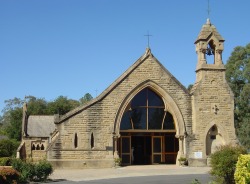 Ironically, after going to so much effort to put in a railway, this was discontinued after the second world war, and the five railway stations in Rookwood were removed - one of which was removed lock stock and barrel and sent hundreds of kilometres south, where it is now the All Saints Church in Ainslie, in the nation's capital city, Canberra. You can see from the Glass entrance on the front - this was where the trains used to go through! Now there is only an "architectural interpretation" of the old Mortuary station No:1 remaining There are many famous people who have been buried at Rookwood over the years, here are just a few:
Anglican Section
Old General Section
Independent Section
Catholic Section
12 Comments
|
Author
|
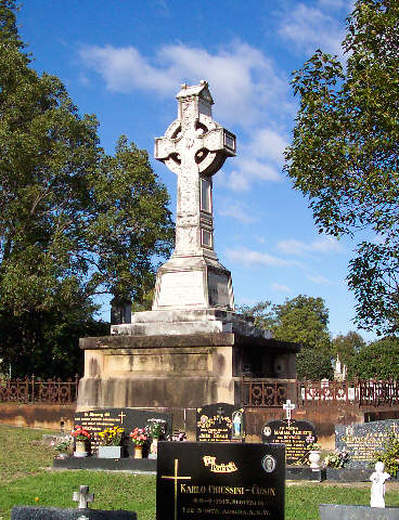


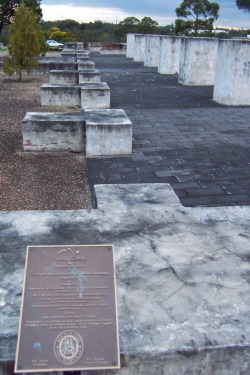
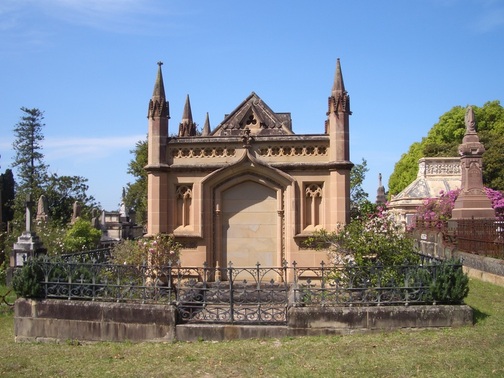


 RSS Feed
RSS Feed